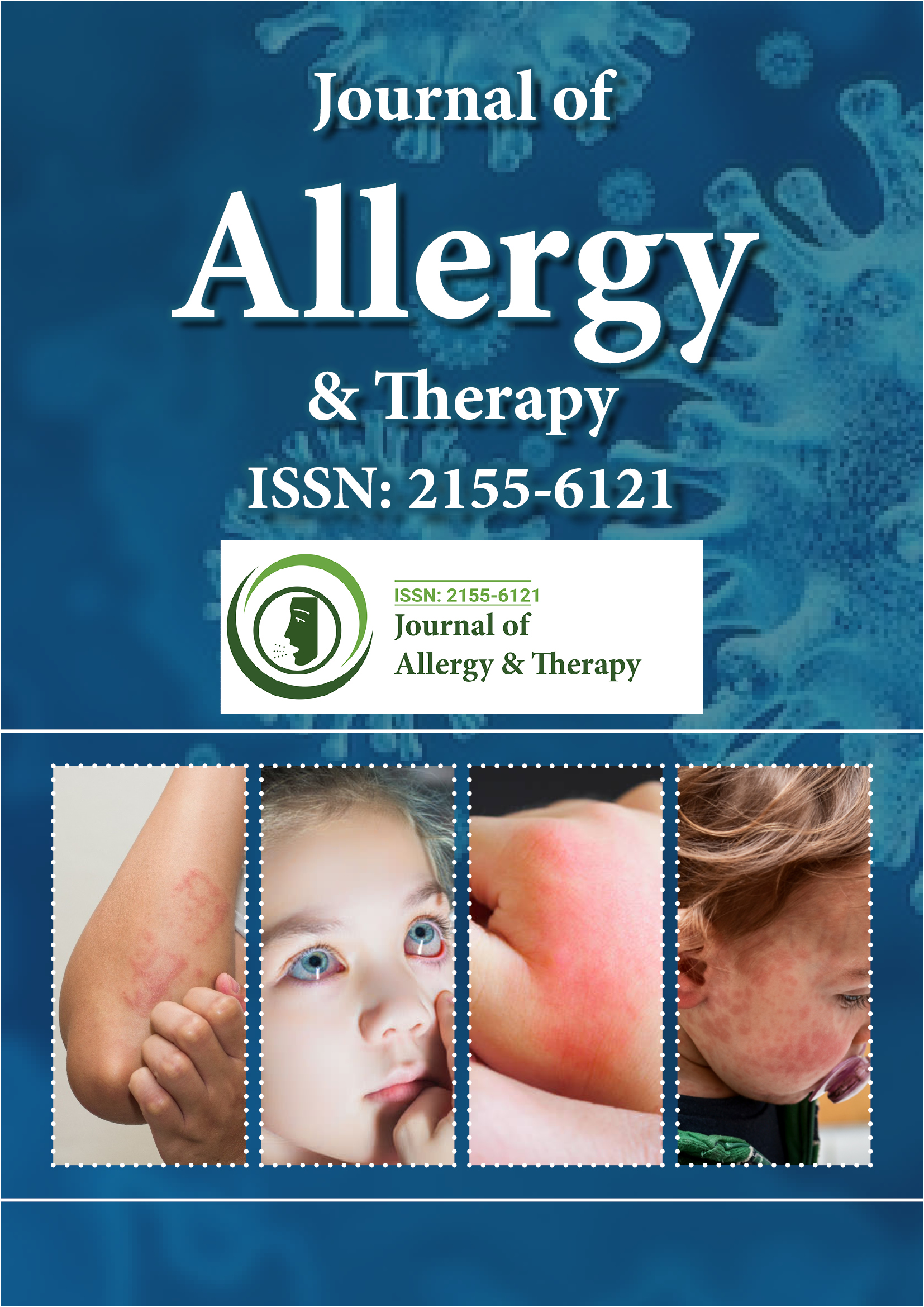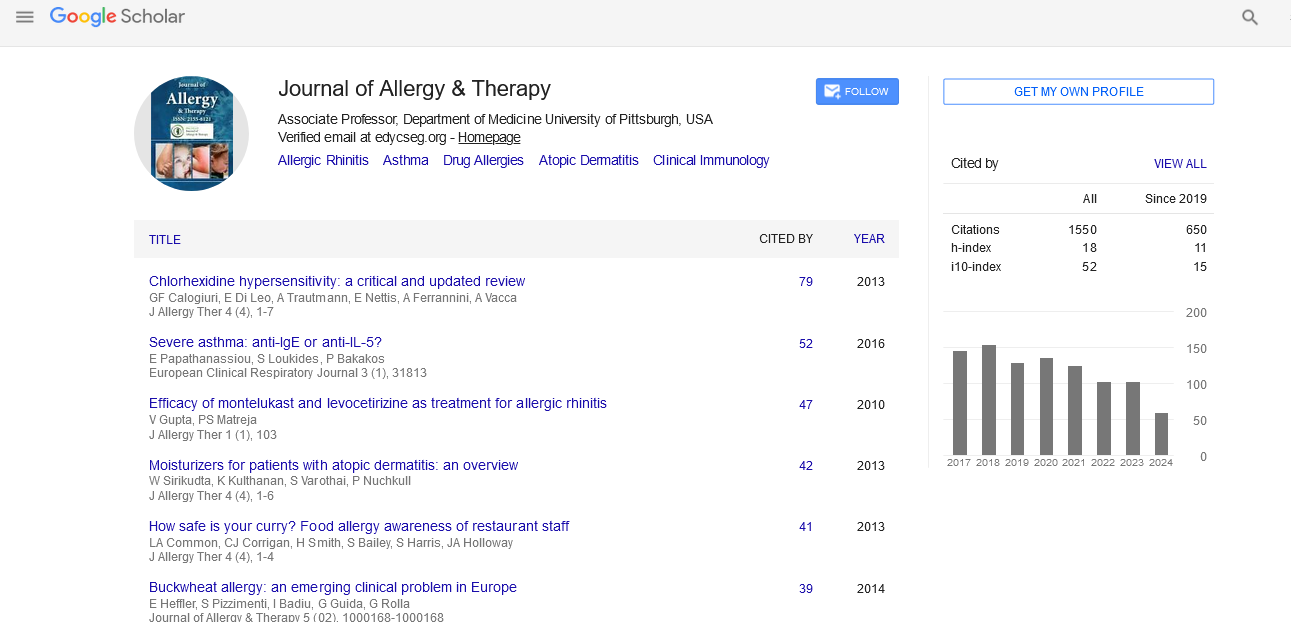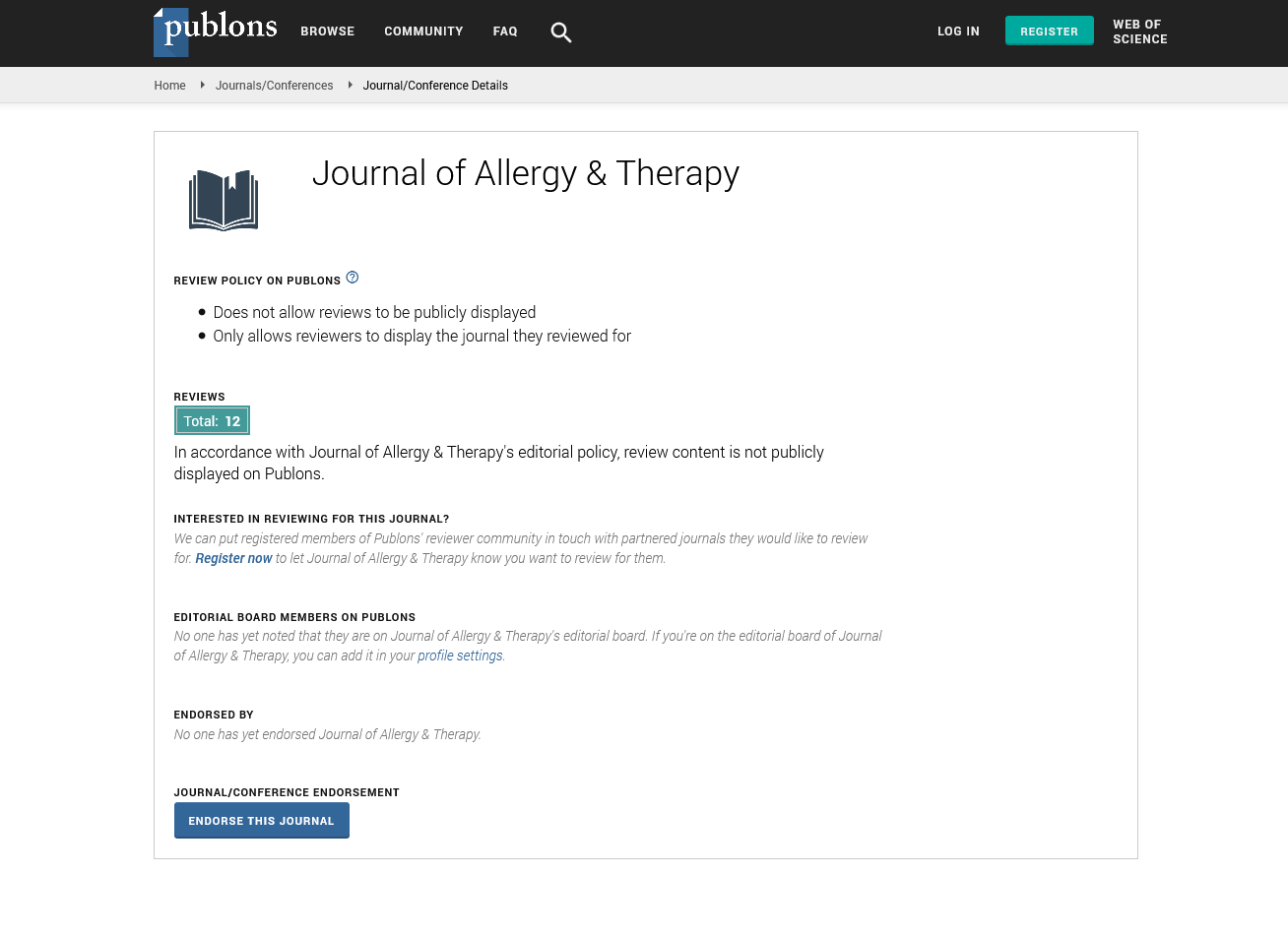Indexed In
- Academic Journals Database
- Open J Gate
- Genamics JournalSeek
- Academic Keys
- JournalTOCs
- China National Knowledge Infrastructure (CNKI)
- Ulrich's Periodicals Directory
- Electronic Journals Library
- RefSeek
- Hamdard University
- EBSCO A-Z
- OCLC- WorldCat
- SWB online catalog
- Virtual Library of Biology (vifabio)
- Publons
- Geneva Foundation for Medical Education and Research
- Euro Pub
- Google Scholar
Useful Links
Share This Page
Journal Flyer

Open Access Journals
- Agri and Aquaculture
- Biochemistry
- Bioinformatics & Systems Biology
- Business & Management
- Chemistry
- Clinical Sciences
- Engineering
- Food & Nutrition
- General Science
- Genetics & Molecular Biology
- Immunology & Microbiology
- Medical Sciences
- Neuroscience & Psychology
- Nursing & Health Care
- Pharmaceutical Sciences
Commentary Article - (2022) Volume 13, Issue 3
Note on Phenomenon of Sinusitis
Maki Akamatsu*Received: 01-Mar-2022, Manuscript No. JAT-22-16199; Editor assigned: 04-Mar-2022, Pre QC No. JAT-22-16199 (PQ); Reviewed: 18-Mar-2022, QC No. JAT-22-16199; Revised: 25-Mar-2022, Manuscript No. JAT-22-16199 (R); Published: 04-Apr-2022, DOI: 10.35248/ 2155-6121.22.13.277
Description
Sinusitis is one of the most common health complaints leading to a physician visit in the United States, as well as one of the leading causes of antibiotic conventions. In 1 time, there were over to 73 million defined exertion days in cases with sinusitis and total direct medical costs of nearly $2.4 billion (not including surgery or radiographic imaging). In addition, up to 14.7 of people in one National Health Interview Survey had sinusitis the antedating time. The newer term is rhino sinusitis because purulent sinus complaint without analogous rhinitis is rare.
Acute rhino sinusitis unforeseen onset, lasting lower than 4 weeks with complete resolution, sub-acute rhino sinusitis. A continuum of acute rhino sinusitis but lower than 12 weeks. Intermittent acute rhino sinusitis, fore or further occurrences of acute, last for atleast 7 days each, in any one- time period, signs of addictive sinusitis symptoms last for more than 12 weeks.
Sinusitis is generally started by a viral upper respiratory tract infection, with only 2 of cases being complicated by bacterial sinusitis. About 90 of cases in the united states are estimated to admit an antibiotic from their general guru, yet in utmost cases the condition resolves without antibiotics, indeed if it's bacterial in origin. Three utmost general interpreters calculate on clinical findings to make the opinion. Signs and symptoms of acute bacterial sinusitis and those of a prolonged viral upper respiratory tract infection are nearly analogous, performing in frequent misclassification of viral cases as bacterial sinusitis.
Humidification, nasal marshland, decongestants similar as pseudoephedrine, remember that oxymetazoline cannot be used for further than 3 days due to answer traffic and those oral decongestants should be used with caution in hypertensive cases. Antihistamines haven't been shown to be useful and can lead to disabled drainage. They're only of benefit in early antipathetic sinusitis. Topical steroids are used to dwindle nasal mucosal edema butare more efficient in habitual and antipaztheticsinusitis.
Only start antibiotics if she/he explosively suspect bacterial disease.Antibiotics use empirically and based on community patterns of resistance. Ten to 14 days of amoxicillin or amoxicillin-clavulanate is first- line treatment. In some communities, amoxicillin effectiveness is lower than 70. Trimethoprim-sulfamethoxazole well for some, but there's a advanced rate of resistance. Failure of symptoms to resolve after 7 days of remedy should prompt one to switch to a broader diapason agent, similar as ten to fourteen days of augmentin, cefuroxime axetil, and other alternate or third- generation cephalosporins, clindamycin alone or along with ciprofloxacin, sulfamethoxazole, a macrolide, or one of the fluoroquinolones.
It's most important to separate between acute viral versus bacterial rhino sinusitis. Antipathetic rhinitis is also a common condition taking explication. Fungal infections may also beget rhino sinusitis. Invasive fungal sinusitis is a serious form of this infection that's more common in immunocompromised cases. It's associated with a high mortality rate.
Utmost cases of uncomplicated acute bacterial sinusitis can be treated as an inpatient with a good prognostic. Anterior or sphenoid sinusitis with air-fluid situations may bear hospitalization with Intravenous (IV) antibiotics. Cases that are immunocompromised or are poisonous appearing bear admission. Fungal sinusitis is associated with high morbidity and mortality.
Sinusitis may extend to the bones and soft tissues of the face and routeways. Facial cellulitis, periorbital cellulitis, orbital abscess, and blindness can develop. Sinusitis can lead to intracranial complications similar as cavernous sinus thrombosis, epidural or subdural empyema, and meningitis.
Sinusitis is a common complaint that's stylish managed by inter professional platoon that includes nurses and druggists. The key to treatment is to reduce the triggers. Cases should be prompted to quit smoking. In addition, empirical use of antibiotics should be avoided. The issues depend on the cause but irrespective oftreatment, recurrences are common and lead to a poor quality of life.
Citation: Akamatsu M (2022) Note on Phenomenon of Sinusitis. J Allergy Ther. 13:277.
Copyright: © 2022 Akamatsu M. This is an open access article distributed under the terms of the Creative Commons Attribution License, which permits unrestricted use, distribution, and reproduction in any medium, provided the original author and source are credited.


